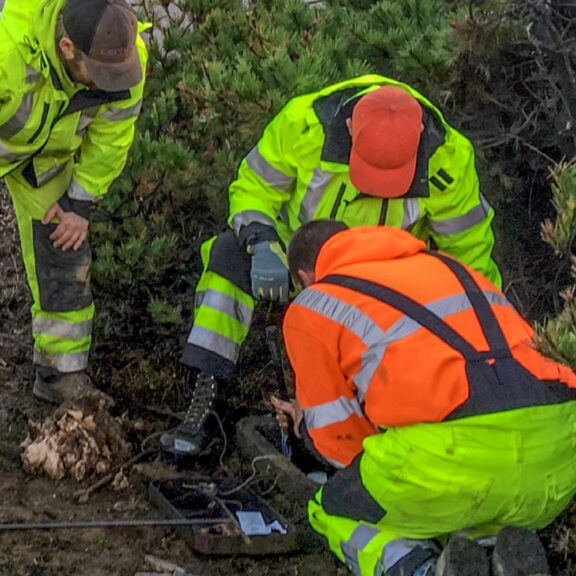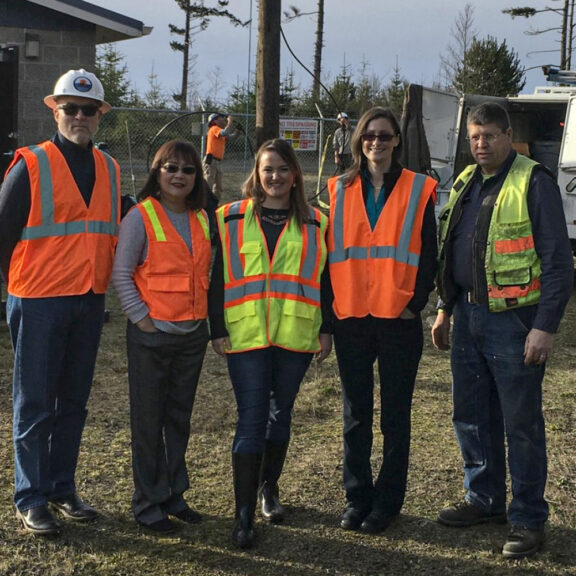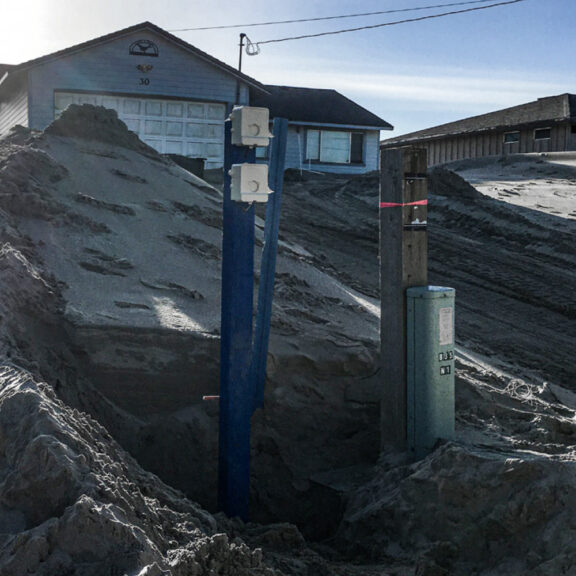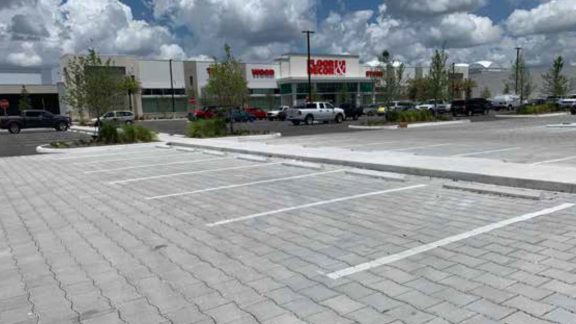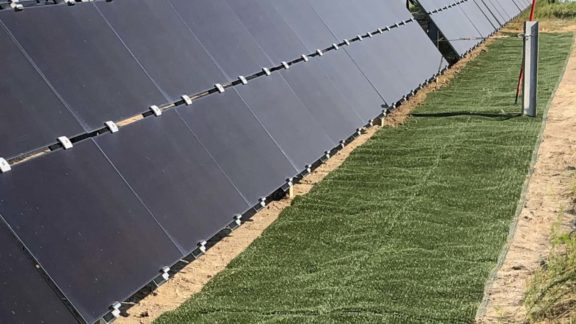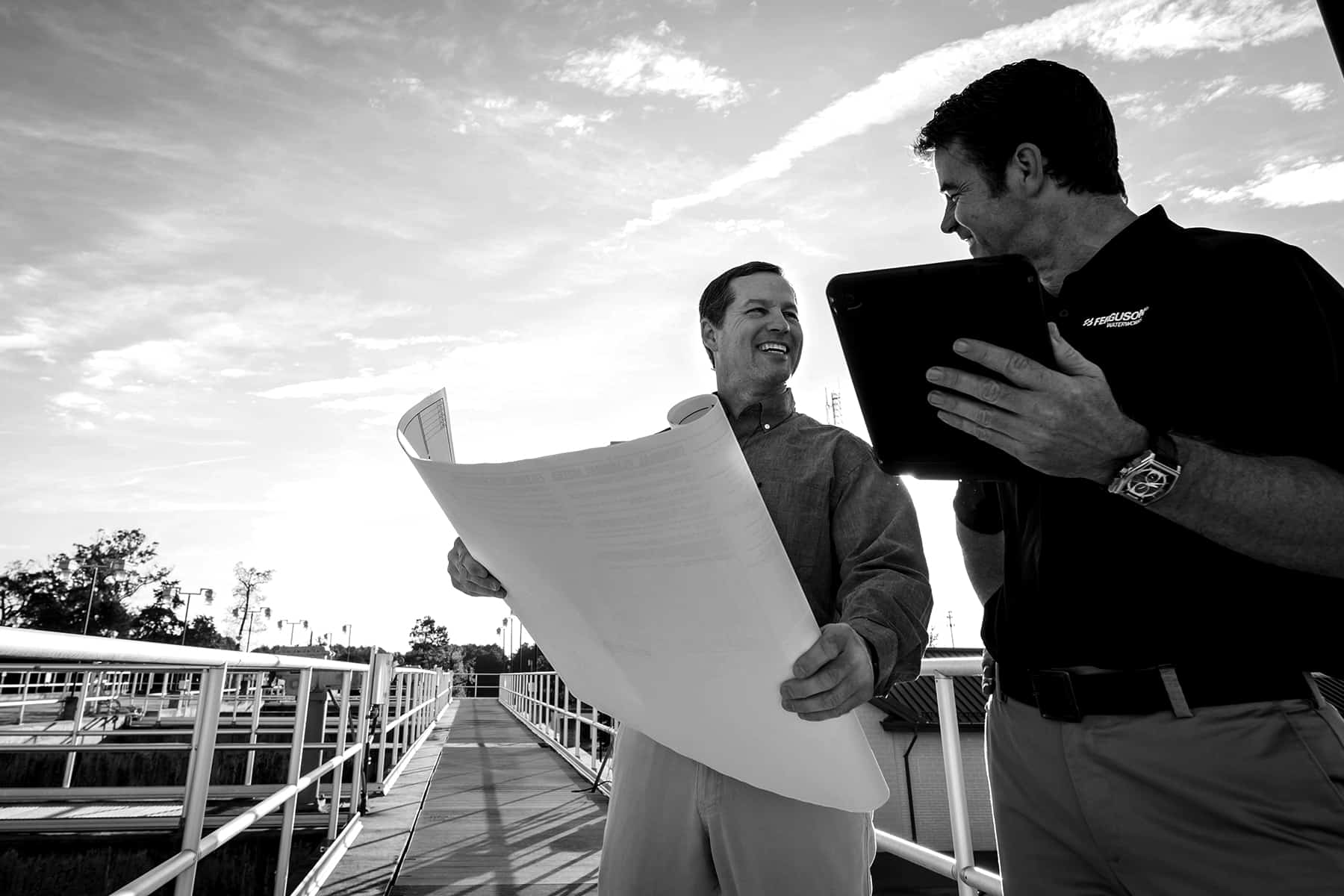Water Utility Management Software Extends Beyond Customer Service & Into Water Conservation
Seal Rock, Oregon discovers water utility management software that not only helps with underground leak detection but also sends customers real time alerts for leaks - Learn how Ferguson Waterworks' AMI solutions helped eliminate unaccounted water usage and lost revenue.

Background
The small seaside town of Seal Rock stretches up and down Highway 101 along the Pacific coastline in Oregon. The town and surrounding areas of Seal Rock receive water services from the Seal Rock Water District, which stretches over 10 miles north to south along the coast. With a static population of about 5,500, the number of people served by the Seal Rock Water District swells to 8,000 in the summertime when visitors flock to the area, occupying homes that sit vacant over the winter. Approximately 40 percent of homes in Seal Rock are second homes, vacation homes, or vacation rentals.
Despite many houses sitting empty for months on end, the billing department at Seal Rock Water District kept receiving an alarming question from concerned homeowners: “Why is my water bill so high this month? I’m not even there!”
Seal Rock has made no secret of its commitment to reducing non-essential water usage. Their walk-by, a combination of touch-read and radio-read meters was installed 10 years ago, and the District Board of Commissioners had made a significant investment in supervisory control and data acquisition (SCADA) technology that provides the district with real-time data throughout their entire system. The Seal Rock Water District was a step ahead with its water system compared to similar districts, but they still recognized an opportunity at the meter point to address customer concerns faster and with more accuracy.
By installing an advanced metering infrastructure (AMI) system, the district could take their water system efforts up a notch that would allow their customers real-time alerts for leaks and Seal Rock would realize long-term savings from eliminating unaccounted-for water usage.
“Our field operations team understands the nature of how our water flows through our water system and with our current SCADA technology, we can track and monitor system leaks,” said Seal Rock Water District general manager Adam Denlinger. “It’s once the water hits the meter that we needed additional technology. AMI allowed us to take the next step to provide our customers with their water use and how it’s affecting their bill.”
Denlinger goes on to explain another critical reason Seal Rock wanted to dramatically decrease the amount of unaccounted water in the district: “Ensuring we are using water efficiently is the most critical of critical services. At the heart of daily life is water, and we want to protect it for our customers and future generations.” “Although we see 50+ inches of rain a year, Oregon is not immune to water shortages. We rely on our water sources and conserving water is important to us.”
What challenges did the Seal Rock Water District need the AMI system to manage?
Community demands:
Many of Seal Rock’s property owners live elsewhere the majority of the year and their homes sit vacant. Leaks would often go on for up to a month before it was detected.
Aging infrastructure:
Seal Rock’s meter system was 10 years old and nearing the end of its useful life, and reading accuracy was steadily declining.
Limited meter reading resources:
A full-time equivalent employee was required to read meters over five to six days. Illness and weather could affect their ability to complete reads safely and on time.
Challenging environmental factors:
Much of Seal Rock is sandy, making it difficult to pinpoint the exact location of a leak.
Lost revenue:
Approximately 27-30 percent of Seal Rock’s water was unaccounted for due to failed leak detection and mainline leaks, resulting in lost revenue.
State mandates:
The Oregon Water Resources Department requires water suppliers to reduce non-essential water usage (including leakage) to 15 percent or less.
The Recommendation
Seal Rock Water District chose an Advanced Metering Infrastructure- AMI system provided by Ferguson Waterworks. Ferguson Waterworks proposed the Sensus Fixed Base FlexNet® Water Metering System to address Seal Rock’s needs, such as underground leak detection. The Sensus FlexNet® system is a long-range radio network that serves as a dedicated and secure two-way communications highway for utilities. Using FlexNet® technology, Seal Rock can collect and access real-time data from various smart sensors.
Advanced meter reading:
FlexNet® eliminates the need for manual meter reading, thus allowing the Seal Rock Water District to re-allocate their employee to other services.
Detection:
FlexNet® provides a programmable leak detection feature built into every SmartPoint® radio that detects leaks previously missed by the aging meter system. It can detect and report backflow, broken pipes, zero consumption, register malfunction, and other issues.
Mode of operation:
FlexNet® takes advantage of multiple transmit modes and separate frequency channels for each type of message (inbound, outbound, alarm, etc.), which increases overall system performance, reliability, and capacity.
System capacity:
The system has the capacity to store 36 months of standard hourly data for all meters on the network.
Frequency of reading:
The default reading interval of the FlexNet® system is one reading per hour.
Read on demand:
Users can directly poll SmartPoints® over the FlexNet® two-way network for real-time reading.
Minimal infrastructure:
Sensus requires fewer data collectors than any other system.
What technology was included in the water utility management software system upgrade?
- Two- M400 FlexNet® Base Stations
- 2,558 – 5/8″x3/4″ and 1″ water service meters with SmartPoint radio transceivers
- Sensus Analytics software interface
- Customer Portal Software
The Results
System installation began in September 2017 and was completed in July 2018. The district is still gathering data to fully understand the benefits and savings from the system, but they’re already seeing increased efficiencies with their new metering technology — saving time and money for both the customer and the district itself:
Customers
- Provides better customer service with early leak detection, saving customers money they lose from wasted water
- Shares data with customers and provides enhanced customer service by utilizing real-time meter reading information
Seal Rock Water District
- Saves staff time, vehicle travel costs, and expenses by eliminating the need for manual meter readings. Meter reading now requires only seconds, and the Seal Rock Water District was able to re-allocate its meter reading employee to other service areas as all meter reading is now automatic.
- Seal Rock’s unaccounted water is steadily declining, increasing supply revenue and getting them closer to the 15 percent threshold required by the state of Oregon
- Increased safety for district staff, by eliminating the need to manually read meters or gather data in the field.
“While the system is still in its infancy, the Seal Rock Water District has already received an overwhelmingly positive response from customers who have received notification of high water use generated through the AMI program,” said Denlinger.
“The District has contacted many customers with an alert to the potential of a water leak in their system. With the old system, high usage was detected only through monthly meter readings and generally left the customer with a high volume of water usage to pay for before fixes were made. Detecting water leaks early with AMI is already having a positive impact on the district, our customers, and, ultimately, the environment.”
Ultimately, AMI data offers the district a better understanding regarding the flow of water through the system which, in turn, allows the district and its customers to control unaccounted-for water, reduce demand on the stream, and “protect the source.” Reducing the amount of water removed from coastal streams, many of which are already impaired because of overallocated withdrawals, translates to better stream health and a more sustainable water supply for the future.
Protecting the environment is everyone’s responsibility and something the Seal Rock Water District Board of Commissioners takes seriously. Water is a precious resource and using technology like AMI allows communities to ensure its availability for future generations.
View Similiar Case Studies
In order to revitalize and meet stormwater codes, the abandoned parking area at the Shoppes at Fashion Square in Orlando, FL, required updates. With a permeable paving system and machine technology, we helped the client achieve their goals, save $1 million, and complete the project in just 10 days.
With solar panels in place and operational, an immediate and effective erosion control solution was imperative. Especially considering the panels were positioned next to channels, drip lines, and spillways.
After failed attempts to stabilize the earth at the Mt. Jackson Solar Farm, they required an immediate, cost-effective erosion control solution. Ferguson Waterworks was brought on board to address their ongoing concerns.
